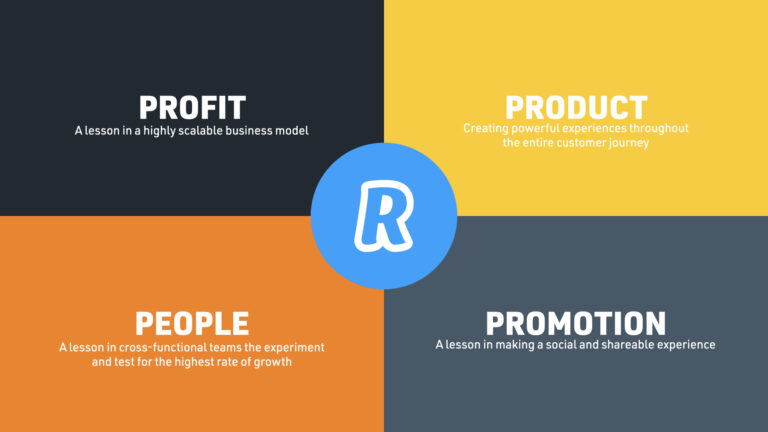How to fix the Banking Customer Experience
Running a bank and creating a world-class digital experience is hard work. Let’s identify the customer experience struggles that Banks encounter amidst digital transformation. Importantly, let’s embrace an agility mindset as we explore solutions for the banking customer experience.
Banking customer experience baseline
A universal theme across the globe amongst consumers is that their banking experience is unsatisfactory. FIS Pace found that 77% of customers feel that their bank’s experience is below expectation.
It’s more than customer experience at stake here. It’s about trust. Accenture found that only 29% of Australians trust their bank to look after their long-term financial well-being.
Banks find themselves caught between market forces, new FinTech competitors, branch costs, regulation and new digital expectations from both customers and employees. And it’s the user experience that has suffered as a result of these forces.
The current customer experience in banking needs to be called out. By doing so, we can focus on solutions that will help people feel more confident about their financial decisions in life.
Timeline of FinTech and banking
On a brighter note, we are experiencing a real renaissance in banking. Since Banca Monte dei Paschi di Siena, the first bank opened in 1472, not much changed in banking until recent times.
Over the second of the last century, we’ve seen systematic banking shifts due to new disruptive technologies. All of these have transformed the customer experience:
- 1950/60’s Diners Club and ATMs
- 1970’s Nasdaq electronic trading and E-Trade launch
- 1990/00’s Paypal & Bitcoin launch
- 2010’s Revolut and Apple Pay launch
Successful FinTech Models
And it’s the customer experience that has been the driving force of tremendous growth in FinTechs and Neo Banks.
The top 26 global NeoBanks, such as Chime and Revolut, have acquired 38M customers through a better user experience.
Their model for success has been to offer great customer experience by either being ‘Full Stack’ or ‘Front End’. Full-stack banks, such as Starling and N26 have received bank charters and licenses. On the other hand, Chime and Revolut have yet to accept regulatory greenlights, so they have to work with partner banks in a wholesale manner.
The drive force of NeoBank growth is customers and simple user experience. NeoBanks use three different customer approaches:
- Freemium
- Multi Tiered
- Niche
Challenges & Opportunities in Banking
The combination of ‘free and easy’ to use has been the cornerstone of the customer experience. However, this has come at the expense of profits. Monzo has never made a profit, has lost all its founders and Ketherine Long, analyst at GlobalData describes Monzo’s business as “an increasingly expensive charitable cause for the UK market”.
And it’s not just the NeoBank hallengers that have problems on the horizon. Legacy banks are stuck with Branches. The average US branch annual costs are between $600,000 and $800,000. But there is still a customer need for the branch; the dilemma is finding a viable model for local branches in 2021.
Banks and FinTechs are responding to these challenges. We have bank remodelling that embraces tellerless and lounge styles pioneered by Virgin Money. FinTechs are blitzing on market expansion and new offerings from fintech. Revolut is taking on both India and USA, whilst expanding into SME banking – all at the same time.
The bottom line here is we are witnessing the second wave of digital transformation. And the FinTech stakes are enormous.
Angela Strange, of Andreessen Horowitz states, “nearly every company will derive a significant portion of its revenue from financial services”.
So if nearly all companies will have a flavour of FinTech, let’s dive into five bad habits that banks have in customer experience.
- Opening an account is too slow
A study by Peter Ramsey of Built For Mars found that UK challenger banks were dramatically better at the experience of opening a bank account. It took 5x as many clicks to open an account with First Direct as it did with Revolut.
Companies can reduce the number of clicks and time to open an account by designing a fully digital process that captures the bare minimum information entirely within the app.
When opening an account, Monzo, Revolut and Starling only asked for your current address. Whereas Natwest and HSBC ask for at least one previous address—sometimes asking for three years of address history.
- Poor UX making payments harder
Sometimes the large number of clicks makes the banking user experience hard. Other times the UX is just plain confusing. Ramsey’s UX study found that whilst Monzon and Nationwide had the same number of clicks to make a payment, their UX had widely different results. It was three times faster to send a payment with Monzo than it was with Nationwide.
The solution here is for companies to prototype their user experience with customers. These user flows should measure by clicks and time to complete the task.
From a technology perspective, banks should ensure that their apps update real-time and provide notifications at lightning speed. These development choices give a faster experience and present critical information more transparently.
- Hiding fees in international exchange rates
The theme of transparency continues when we look at the customer experience of making an international transfer.
Banks have been the masters of transaction fees. Some might say they are even better at hiding them. But in the era of product comparison and Twitter rages, the only choice banks have is to be open and transparent about fees.
Sending money abroad is full of potential fees: from sender fees and exchange rates to foreign bank charges. The absolute truth here is that most consumers don’t know about these. When hidden forces slash their payment total, they’re often angry and confused.
So how did Starling Bank charge for FX exchange when sending GBP100 to USD compared to HSBC in the UK? Well, they only charged GBP 0.40. HSBC, you ask? GBP 4.72. Revolut doesn’t even charge for the same transaction.
The solution here is obviously to reduce charges and educate your customers. Make international payments a predictable experience. Imagine the trust a bank could build with this approach?
Technology has a role to play in improving international payments. The entire payments experience should be within the native app. Don’t send the customer out of the app to a website.
4. Slow account sharing and payment authorization via Open Banking
Open banking is a huge opportunity to improve the customer experience. In our recent Emerging Trends report, we found that open Banking is one of the biggest short term implementation priorities for banks.
Integrating Open Banking is not just a technology challenge. Too often, banks forget the user experience side of presenting data from third parties. So what do banks often do when sharing account data or granting account authority? They show raw data that means nothing to the user.
Let me give you an example of what my bank does with regular transactions. When I transfer money to my crypto investing account at Swyftx, the payee listed is ‘Moneytech Payments P/L Sett ‘. Who the hell are these guys? This name was my first shock – it’s the registered business of the identity. It’s not the brand payee I was expecting. This is a major UX shock when you think you’ve transacted with the wrong party.
The solution is for banks to use the Open Banking Directory, which presents the brand name and logo. This relevant data is what users need for a customer experience that builds trust.
Open Banking also brings with it an integration job for the technology team. Firstly the integration needs to meet PSD2 and GDPR. From a customer point of view, the authorization step of an Open Banking payment authorisation should take ten seconds or less. This speed means deep work needs to be applied to the API specification and the payment rails to ensure 5 seconds or less authentication.
- Poor Customer Support
If most banking products are primarily the same due to regulation, the only place to differentiate is customer experience.
The moment when customers have a problem is the single best chance to offer support and advice. It’s the perfect moment to differentiate.
Most banks have yet to work out the power of answering a customer’s phone call. JD Power found that the average response time from a bank representative, a human being, was 6.87 minutes. Other studies had found anecdotes for more than 30 minutes before customers spoke to a live representative.
Across all industries, the standard service level goal is 80% of calls answered in 20 seconds. Banking is way off the pace when it comes to answering the phone.
So how can we fix this? Banks should set a goal for response time and optimize the queue process. In addition, redesign your workforce approach to match call pattern data.
According to Gladly, 86% of consumers expect conversations with agents to seamlessly move between channels. Banks should naturally also deploy chat. The best practice is to make the live chat persistent and operate 24.7.
And if you want to lead the market, look no further than Monzo. They send personalized messages to move between channels and seamlessly use notifications while on hold on the phone. They use two channels simultaneously.
Moving the banking customer experience forward
Banks are trying to address the cost of branches, the complexity of legacy systems, and employees working in silos. FinTechs are searching for profits and wondering if they have a sustainable business model.
Hopefully, I have given you some practical advice on improving the customer experience. However, I have one final suggestion and this is what banks can do on the inside.
Learn, Adopt and Celebrate an Agile Mindset.
Banks need to put a growth mindset at the heart of how employees think and behave. I have six mantras that demonstrate this mindset:
- Empathize with Users
- Build, Measure, Learn
- Test the Entire Funnel
- Build Trust for Teams
- Stimulate with the Sensors with Prototypes
- Build Small Teams
Where do we start? With the customer. Go out into the world and interview them, survey them, test prototypes with them.
Don’t underestimate this opportunity for transformation and empowerment that exists with customers today. McKinsey recently found that half of US banking customers need extra support to transition to pure digital banking.
So what are you waiting for?
If you want to build an agile mindset, you can take a free course on Agility in the Digital Age.




